Islam is the 2nd largest religion in the world, and comes second only to Christianity, as far as a number of people following a religion are concerned. In spite of accounting for, approximately 25% of the world population, the knowledge about the great Islamic kings who left behind indelible marks in course of history, is almost unknown to the vast majority of the world. Many of these great rulers were not just champions of their religious faith but were also harbingers of great change, that affected the course of world history. Here we take a brief look at those great Muslims who changed history forever.
Normally not many people, outside the Islamic world would be able to recognize this name in history, but mentioned in a bit different way, he is certainly a very popular figure – The True Caliph of Arabian Nights. The stories from this collection of Folk Tales from the middle east is known by almost every child, everywhere in the world. What is rather unknown is that stories from “One Thousand and One Nights” or more commonly in English as - “Arabian Nights”, were written at the time, when Harun al Rashid ruled Baghdad. The reason that Harun al Rashid figures as the hero in many of these stories are that he indeed was a legendary figure.
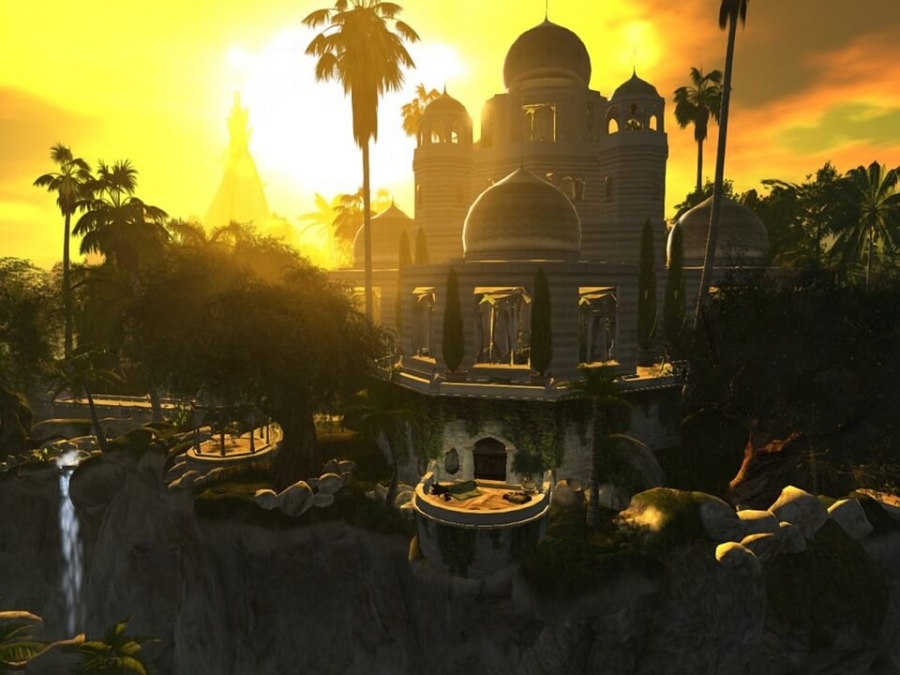
Harun al Rashid was born in modern-day Tehran Province, somewhere between 763 to 766 (in spite of being a legendary figure, his exact birth date remains unknown). His father – al Mahdi, was the 3rd Abbasid caliph, a ruler with considerable riches and power. His mother was al Khayzuran, former slave girl, who later became a powerful queen, thanks to the love of her husband & her own ambition and wisdom.
It was military expeditions against the Byzantine Empire in the year 780 and 782, which marked the beginning of a long era of campaigns, which would later make the caliph one of the most powerful rulers of his time. Although the main initiative for the expeditions, was taken by the senior generals, the success of the campaign made the young Harun al Rashid, governor of vast areas of land, covering modern-day – Syria, Egypt, Tunisia, Armenia, and Azerbaijan. Young al Rashid’s mentor – Yahya bin Khalid bin Barmak & his mother – al Khayzuran played an important role, in his rise to power.
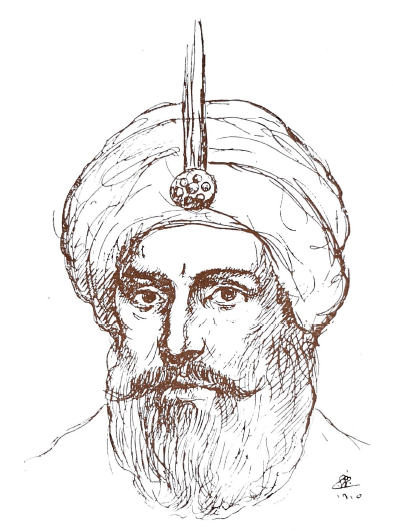
After the death of his father in August 785 & his elder brother al Hadi, soon after in September 786, Harun al Rashid became the 5th Abbasid Caliph on 14th September 786. His mentor – Yahya the Barmakid, became his vizier (chief minister). During his reign, there were many internal revolts & external conflicts – most notable against the Eastern Roman Empire led by Empress Irene and later the Byzantine emperor – Nikephoros I, which kept him very busy. He almost always emerged from these conflicts victorious & his empire prospered. At his zenith, his empire extended from the Mediterranean coast& entire middle east to modern day Pakistan, in the east.
In spite of being a very powerful & prosperous ruler, Harun al Rashid understood the need for diplomacy & always chose peace, whenever it was practically possible. One of the great examples of this is the friendship between Harun al Rashid and Charlemagne (Charles the Great) – the founder of the Carolingian Empire.
Charlemagne was the most famous European emperor of the Medieval era. A diplomatic mission was sent by him in 798 to secure a better relationship with the Abbasid Caliphate and form an alliance. Harun al Rashid not just accepted his proposal, but sent many precious gifts to the European emperor. Among the gifts sent to emperor Charlemagne, were – an elephant (a rare sight for Europeans of the time), chess set, horn, a water clock – which was much advanced for its time, a golden pitcher and tray, brass candle holder, perfume & silk; to name a few. The European emperor was also allowed to send financial help to the Christians of Palestine.
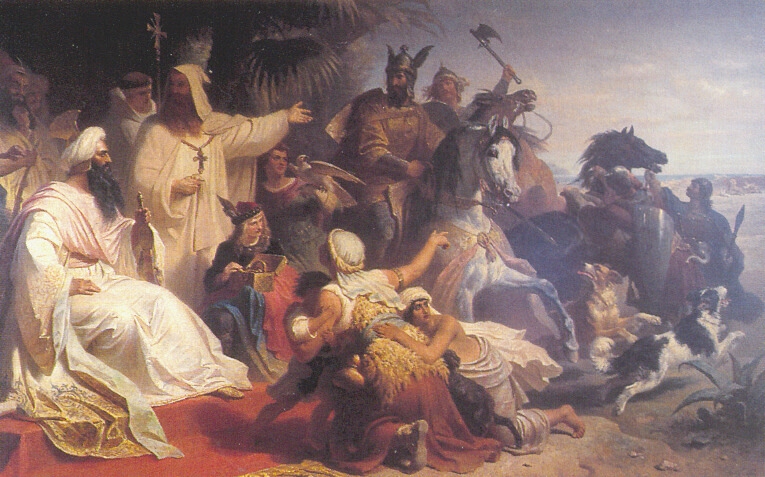
Harun al Rashid also employed Christians & Jews in important positions, including appointing a Christian – Gabriel Bukhtichlo as his physician, who was treated as a member of the royal family.
A Great Patron of Learning- The city of Baghdad became tremendously rich under his rule. As a scholar himself and expert judge of music and poetry, he himself encouraged these in his kingdom & gave patronage to scholars, musicians, and poets. Many learned men of the time, were invited & encouraged to visit Baghdad and share their expertise in important fields.
Harun al Rashid Library – In continuation with Harun al Rashid’s efforts to make Baghdad rich in not just materialistic riches but also a center of knowledge, culture & wisdom, the Caliph established one of the greatest libraries of the time – House of Wisdom, in Baghdad. Known as Bayt al Hikma, in Arabic and otherwise, as Grand Library of Baghdad, this library continued to flourish & prosper during the time of the Caliph’s son – al-Mamun.
The academic collection in House of Wisdom was from different parts of the world and included texts in – mathematics, science, astronomy, medicine, philosophy & literature. The work also included those of ancient scholars like – Plato, Aristotle, Hippocrates, Ptolemy & Euclid. Scholars & scientists from all over Asia & Europe came to study & contribute to the library, making it a shining beacon of knowledge & wisdom during the Islamic Golden Age.
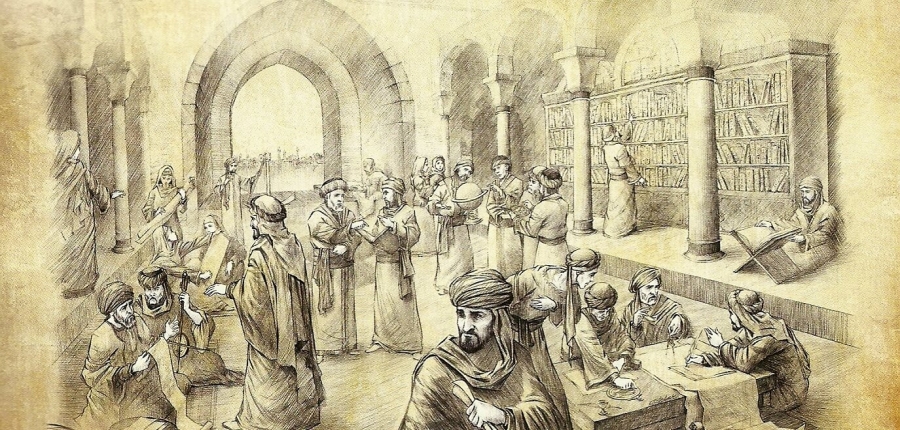
Harun al Rashid in Arabian Nights- As a conscientious king, he was always concerned that his officials should not misuse authority to harass poor & innocent people. If anything was amiss, he wanted to know about it. It is for this reason, he disguised himself and walked through the streets of the city, talking to people knowing their opinion regarding different issues affecting the lives of his subjects. These real incidents also sometimes found mention in the stories of the Arabian Nights. Harun al Rashid also finds mention, in works of western literary genius like – WB Yeats, HD Longfellow, Alfred Tennyson, O Henry, James Joyce, and Salman Rushdie.
Salah ad-Din Yusuf ibn Ayyub, also known as Saladin or Salah ad-Din, meaning the Righteousness of the Faith in Arabic. As the first Sultan of Egypt & Syria, heis most famously known as the king responsible for - Islamic conquest of Jerusalem, taking it back from the Christian crusading army in 1187.
Saladin was born into a rather modest family, that served Nur ad-Din, the ruler of Aleppo (Syria). Since an early age, he demonstrated a great interest in religion & regional politics. The violent takeover of Jerusalem, by the Christian Crusading army, had greatly moved him. Besides religion & politics, he also demonstrated a good knowledge of mathematics, astronomy, and law.
Salahuddin al Ayyubi’s political & military career began under the guardianship of his uncle – Asad al-Din Shirkuh who was an important military commander under Nur ad-Din. The young protégé soon distinguished himself in his uncle’s army, as a skilled & reliable asset during the time of the battle. As Shirkuh rose in stature so did his nephew, who had become one of the most trusted aids of his uncle. Shirkuh later became the vizier of Egypt, and after his death was succeeded by Saladin. In 1174, Nur ad-Din fell sick & died soon after, which gave Saladin the opportunity to declare himself Sultan of Egypt and founder of Ayyubid dynasty.
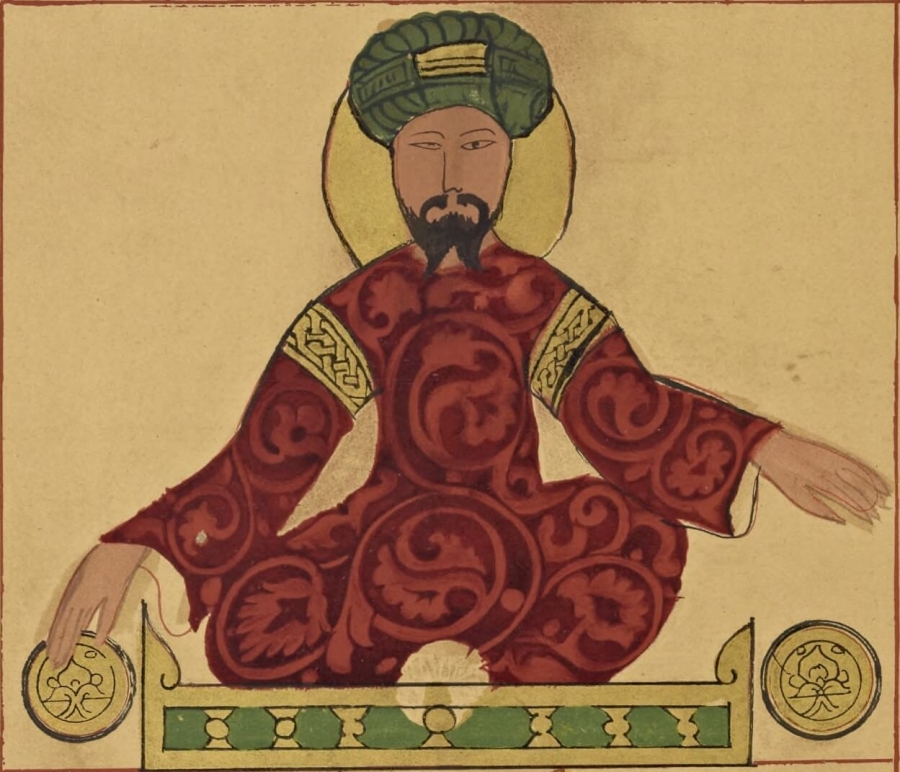
After the death of Nur ad-Din, Saladin took control of Damascus, by marrying Nur ad Din’s widow, thus establishing his legitimacy over the crown. For consolidating his power in Syria, he had to take control over Aleppo and Mosul, which was done by 1176 & 1186 respectively. He formed alliances with some opponents & some he brought down by the sword. Once he was successful in suppressing all his opponents, he declared himself the sovereign king of Syria and Egypt.
Saladin had come into conflict with the Crusader army many times in life, starting from the time, he was assisting his uncle – Asad al-Din Shirkuh. The kingdom of Jerusalem was a strong Christian kingdom, which yielded considerable power in politics of the area, at the time. Even after Saladin became king, the clashes continued with the crusaders, from which most often Saladin emerged favorably victorious. However, in 25th November 1177, in Battle of Montgisard, his forces were defeated badly, by combined forces of King Baldwin IV of Jerusalem, The Knights Templars and Raynald of Chatillon. Continuous loss of lives on both sides stopped when a truce was agreed upon by King Baldwin and Saladin in 1180 AD.
Unfortunately, the peace lasted for only a short interval, due to the distrust on both sides. It was mainly the actions of Raynald of Chatillon (one of the important leaders of the Christian forces), that chances of peace were severely disturbed. Raynald of Chatillon, constantly attacked Islamic traders and pilgrims, especially with a fleet in the Red Sea. Soon these skirmishes escalated into a direct showdown in Battle of Hattin in July 1187, between the total might of Islamic & Christian forces. The battle ended with the victory of Saladin & the Christian army was totally destroyed. Guy of Lusignan, (the king of Jerusalem, at the time) & Raynald of Chatillon were taken, prisoners.
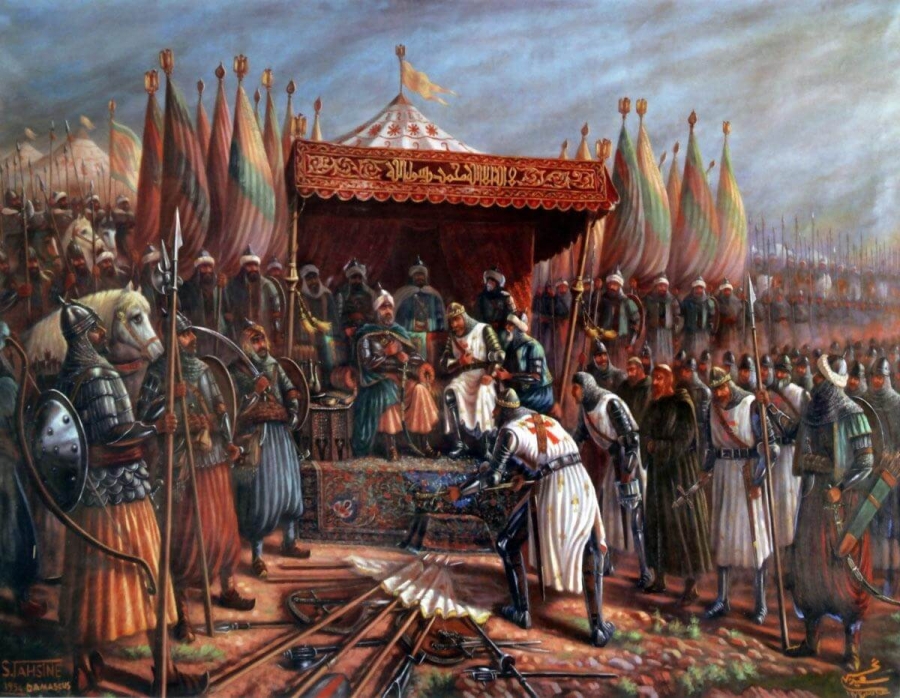
Afterward, Saladin put a siege on Jerusalem. Balian of Ibelin, who was in control of the city, threatened to execute around 5000 Muslim prisoners & destroy places of worship unless a compromise was reached. Saladin promised to allow all people holed up in the city to go free, in lieu of a small tribute for freedom. According to recent estimates, this fine was very meagre in amount and is almost equal to $ 50 of today.
Saladin could have taken over the city of Jerusalem, but he decided to avoid unnecessary bloodshed. After the Christian forces had taken over Jerusalem after the first Crusades, there was a lot of blood on the streets of innocent people, but Saladin decided to spare the lives of people, once he took over the city. According to terms of surrender, all Christians were allowed to leave the city after paying a fine. Unfortunately, some people were taken as slaves, but Saladin did allow many poor people, who could not afford the fine to leave the city. He in fact even allowed the erstwhile king – Guy of Lusignan to go free.
After taking over the city, Saladin also allowed many Jews to resettle back in the city. As he was in good terms with Queen Tamar of Georgia, Georgians were allowed a free passage into the city, with their banners unfurled. In spite of repeated adviceof his generals, Saladin refused to destroy the Church of the Holy Sepulchre & allowed the Christians visitation rights for a fee.
After the fall of Jerusalem, the Christian forces once again regrouped & launched the 3rd crusades, to claim back their loss under the leadership of – Richard the Lionheart, the King of England. It is said that in spite of being adversaries, the chivalrous actions of Saladin won the respect of King Richard. They signed a peace treaty – The Treaty of Ramla in June 1192. Under the terms of the treaty, the city would remain under control of the Islamic forces but Christian pilgrims were allowed to visit the city.
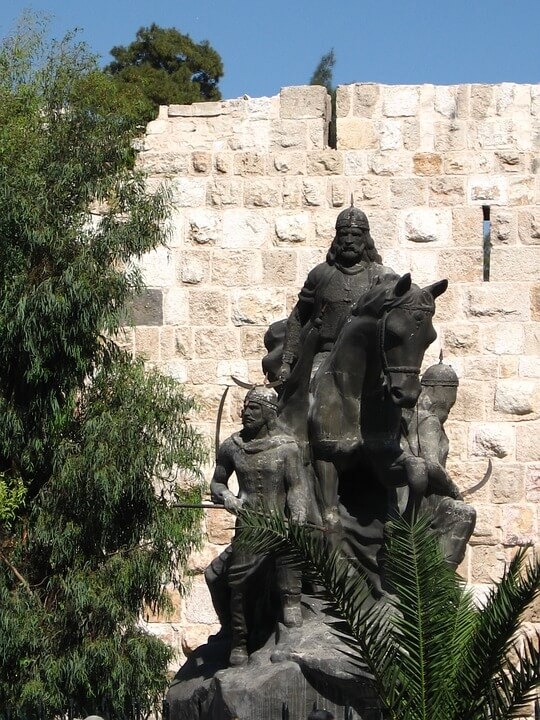
Saladin died on 4th March 1193 after a bout of fever. It is said, that Saladin had donated so much of his personal wealth for the benefits of the ordinary people, that he did not have even sufficient money for burial suitable of a person of his stature. He only had a piece of gold & 40 pieces of silver in his personal belongings. He was buried in a mausoleum in the garden outside the Umayyad Mosque in Damascus, Syria.
The richest person ever in history was not a part of any European aristocracy or is not a tech billionaire of Silicon Valley. That distinction goes to Mansa Musa – the 14 century Emperor of West African Mali Empire.
Born in 1280 AD, Mansa Musa though belonging to royal family governing Mali, was not actually supposed to become the “Mansa” or Emperor. That privilege had been bestowed to his brother – Mansa Abu Bakr, who ruled the empire. However, the emperor was more inclined to challenge the unknown, than enjoy the bliss of royal living. Hence, he went on to explore, the end of the Atlantic Ocean, with a fleet of 2000 ships & countless men, women & slaves to never return. As Mansa Musa, had been appointed as an interim ruler by the previous Emperor, so his disappearance caused Mansa Musa to ascend to the throne permanently.
Not a person to waste an opportunity, he soon put his army to do its job, to expand the boundaries of the Empire. The final area, which became part of the new Mali Empire, stretched 2000 miles from the coast of Atlantic Ocean to modern day Niger. To put it in better perspective, it would be useful to mention that 9 modern West African nations have originated from the landmass comprising this empire centuries ago.
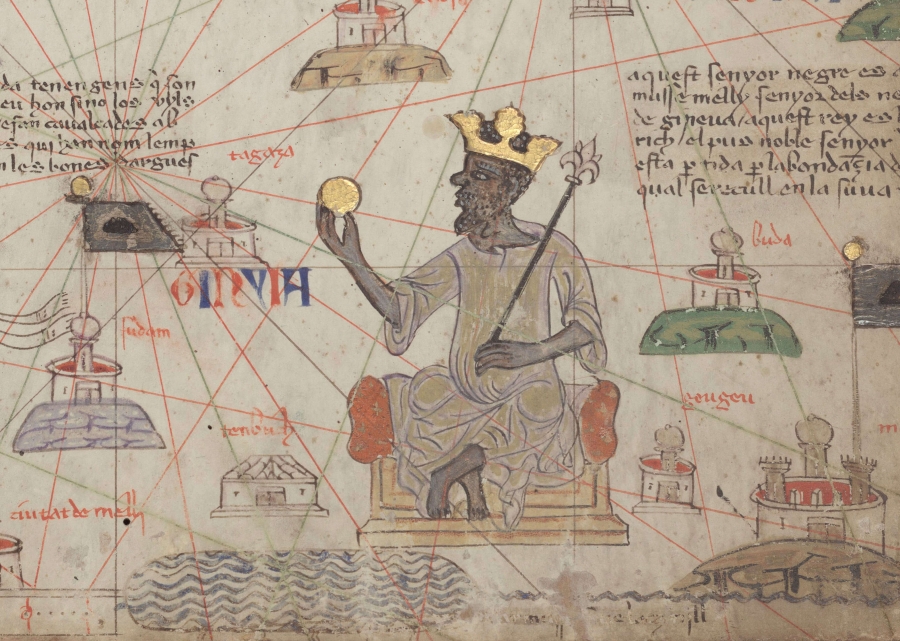
Many new cities & trade centers and associated routes, were brought under the domain of this empire. Taxes from these resources added to its treasury. However, the fact which made this empire rich beyond belief was that 50% of the ancient world’s gold during the period, originated in this huge landmass under control of Mansa Musa. The Emperor had total control over the natural resources of his empire, which were considered his personal property. All this made Mansa Musa, the richest person to have ever lived.
What is the benefit of being rich, if nobody knows about you? Mansa Musa was a devout Muslim and had been contemplating going to pilgrimage to thank god for his good fortune. So, the great emperor of Mali decided to go on a pilgrimage to Mecca in 1324. It was during this pilgrimage to Mecca, the people outside Mali, who were quite unaware of the riches of Mali, caught the glimpse of the prosperity of Mansa Musa.
He left Mali with a caravan of 60,000 people, which included his royal courtiers, soldiers, entertainers, traders, and 12,000 slaves. All these people including the slaves were attired in the finest of brocade and Persian silk. Mansa Musa took care of all the requirement of the people traveling with him. A long train of sheep & goats, was a part of this endeavor, for fulfilling the demand for food.
Mansa Musa was not only considerate to the people, who were part of his caravan but also wanted to help the people, he encountered in the way. For this, he loaded, heaps of gold from his country into approximately a hundred camels, with each beast carrying hundreds of pounds of gold. As the caravan moved through northern Africa, Egypt & the Middle East; the sight of this mobile city moving through the desert, created a legendary tale, that soon found its mark in the pages of history.

Mansa Musa gave gold freely to all the needy & poor he met along the way. He also made many mosques during his journey to the holy lands. His generosity literally filled up the cities in his path with gold. With the sudden influx of surplus gold & financial prosperity among all people, the local economy of the cities like – Cairo & other cities, that Mansa Musa travelled through collapsed. Realizing that his magnanimous actions had devastated the economy, Mansa Musa on his journey back home, borrowed back all the gold that he had previously distributed, at high interest.
By the time Mansa Musa returned back from the pilgrimage, his loyal generals had added many other prosperous cities to his Empire. Mansa Musa, enlightened with the experience of his journey decided to use his riches & resources to the development of his nation.
He had returned from his pilgrimage with the many scholars & architects. He started many new building projects. Many Mosques & Madrasas were built all across his empire, but especially in cities of Timbuktu and Gao. The great Djinguereber Mosque was built during his reign by Andalusian architect, who reportedly received 200 kg of gold for his work. The number of well-developed cities in his empire went up tremendously during his reign with an estimated number being more than 400.
Another important ancient center of learning which was built by Mansa Musa was - The University of Sankore or Sankore Madrasah in Timbuktu, Mali. This ancient university had the largest collection of books in Africa, since the time of the Library of Alexandria. It is believed that the University had between 400,000 to 700,000 manuscripts & had facilities for accommodation of 25,000 students. Scholars from all over Africa & Middle East came to the center of learning, which boasted of some of the best Mathematicians, Astronomers, and Jurists of the time.
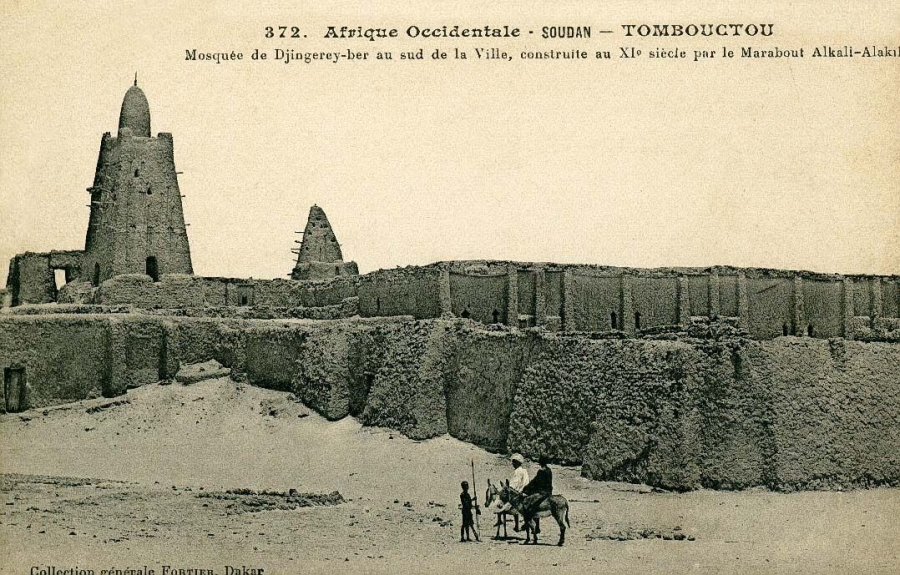
Timbuktu soon became a center of culture, learning, trade & religion. It was not just students/scholars from Africa & Middle East who came to the city for learning, but merchants & businessmen from entire Africa, Middle East & even Europe flocked to the city, for the enormous opportunities that it provided. Timbuktu had become an African El Dorado – A land of gold (during Mansa Musa’s reign) & pride of Africa. Unfortunately, after the death of the emperor in 1337, his successors could not hold the empire together. Soon the legendary emperor & his golden empire disappeared in the pages of history.
Mehmed the Conqueror, who was born in what was considered a very turbulent period of history. The Islamic & Christian forces were fighting each other in name of religion & for control of lands. The sense of loyalty and morality were very fluid & changed at the drop of a hat. The Byzantine Empire, better known as the Eastern Roman Empire, was a ghost of its former self. In this background, Mehmed II was born on 30 March 1432, as the 3rd son among the four sons of Murad II, the Ottoman Sultan of the time.
Mehmed’s mother Huma Hatun was the fourth wife of Murad II and had been a slave girl previously. In the initial years of his life, Mehmed was relatively ignored by his father, in favor of his elder half-brothers, who were much senior in hierarchy. However, the death of his two-elder half-brother, the heir apparent – Ahmet, (when Mehmed was 5) and Ala ed-Din (when Mehmed was 11), made Mehmed the next in line for the throne. With the sudden focus on his ignored son, Sultan Murad realized that Mehmed needed better education, to take up the role of the future Sultan.
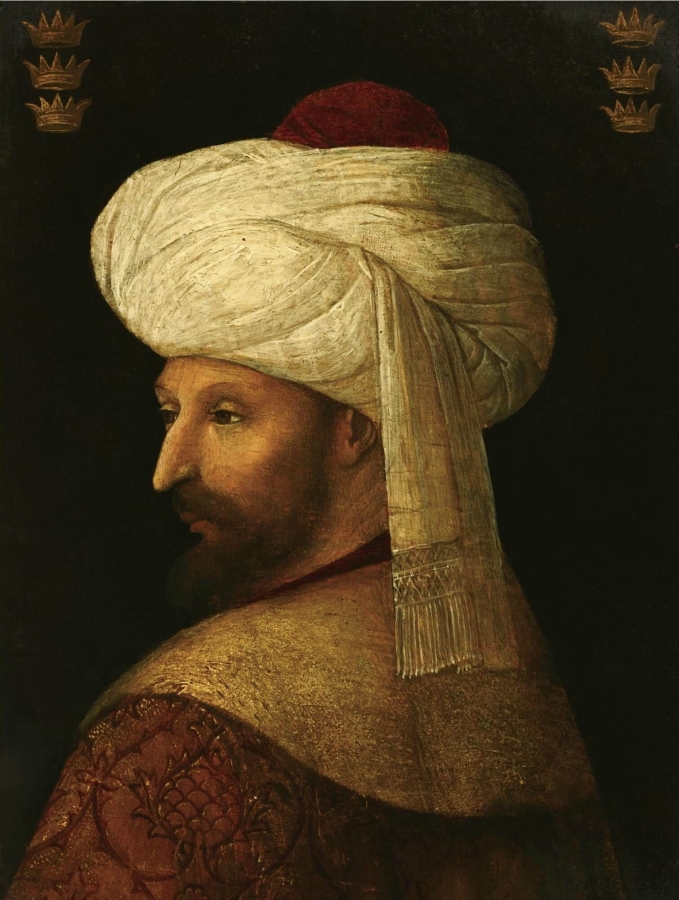
Erudite scholars were appointed to teach Mehmed science, philosophy, Greek & Islamic Literature. He was taught all the famous languages of the time & later became fluent in Turkish, Greek, Arabic, Hebrew, Persian and Latin. As a future ruler, he was also taught the intricacies of administration. However, it was the Islamic education which had the greatest impact on Mehmed’s mindset and would later influence, his course of life.
The Rule of Mehmed had started very unconventionally, when in 1444 Sultan Murad II decided to retire after securing a peace treaty, with the Christian crusading army, which brought an end to the conflict with the Ottomans. However, with a 12-year-old Mehmed II on the throne, the enemies of Ottomans broke their promise made as per truce of Peace of Szeged. The Hungarians, the Venetians, and Papal forces joined together to launch an attack against the young boy king. Realizing that he was too young & inexperienced for the situation he asked his father to return. Murad II refused to come out of his retirement. To this Mehmed wrote a letter to his father “If you are Sultan, come and lead your armies. If I am the Sultan, then I command you to come and lead my armies”.
Murad II realizing the gravity of the situation, came back to lead his armies in Battle of Varna which took place on 10 November 1444 in eastern Bulgaria. The Christian forces suffered heavy defeat and Ottomans won the battle. Mehmed II had ruled from August 1444 to September 1446, but then a reluctant Murad II took the reign on his own hand, realizing that his young son had still a lot to learn. The sudden death of Murad II on 3rd February 1451, brought the soon to be 19, Mehmed II on the throne. This time he would go on to rule for more than 30 years.
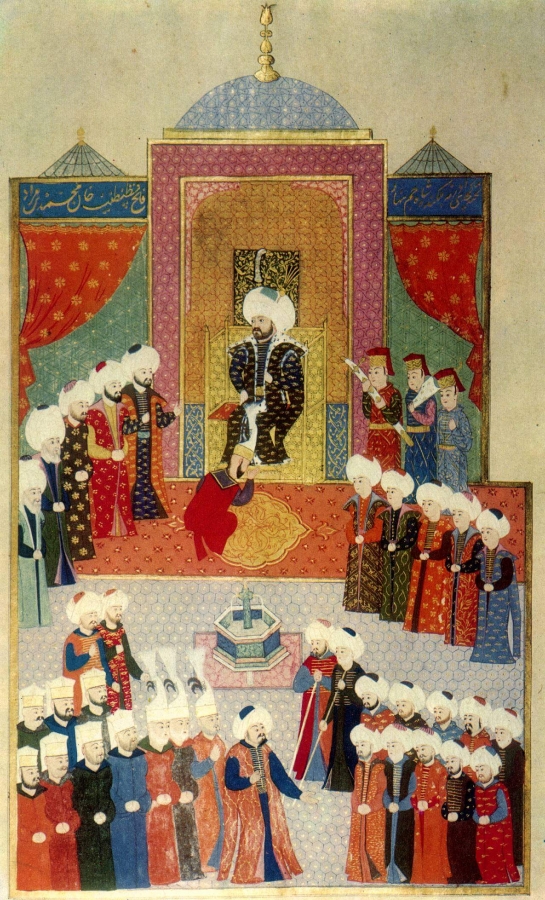
Mehmed II and the Conquest of Constantinople- When Mehmed II ascended the throne for the second time, he was well versed with the politics of the time. The previous unprovoked attack on his kingdom, during his teenage reign, had left him skeptical about the motives of the European rulers. He decided to increase his strength and started to make preparation for the conquest of Constantinople.
He gradually started increasing military power, putting special emphasis on his Naval forces. He also built a fortress – Rumelihisari on the European side of the Bosporus Straits (a waterway forming boundary between Europe & Asia) in just 4 months, which set alarm bell ringing in the administrative circle of Constantinople. This gave Mehmed II complete control over shipping that occurred on Bosporus Straits.
In 1453 the siege of Constantinople began, during which the Sultan surrounded the city with a large force of 50,000 to 80,000 soldiers and a Navy of more than 300 ships. The forces defending Constantinople were much smaller. The city was surrounded by Ottomans, both on land and on the sea. Finally, Constantinople fell to the Ottoman forces on 29th May 1453, after a 57-day siege. Of particular interest is the fact that in this war between the Ottomans and the Christian emperor of Constantinople – Emperor Constantine XI Palaeologus, many Christian soldiers fought for the Ottoman army & many Turkish soldiers loyal to the emperor of Constantinople, died fighting defending the city.
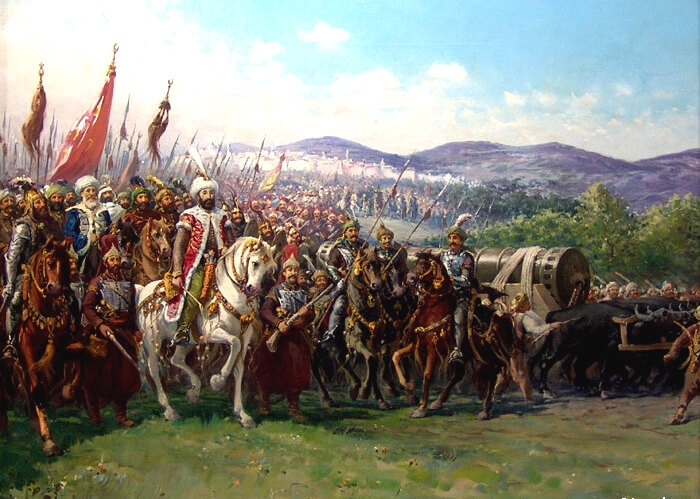
The fall of Constantinople symbolized the end of 1500 years old Roman empire and the victorious Sultan became known as Mehmed, the conqueror. He also claimed the title of the “Caesar of the Roman Empire”. Not being a person to rest on just one victory, he launched military campaigns in Walachia, Moldavia, Rhodes, and the Crimea. Further conquest followed in – Athens, Trebizond, Morea, Serbia, Kingdom of Bosnia, Albania, Bulgaria. Almost the entire Balkans came under Ottoman rule during his reign.
The conquest of Constantinople was a very violent affair with loss of innocent lives and severe damage to property. When the Sultan later saw the city on 2nd June in total ruins, he was reportedly moved to tears, looking at the devastation. He ordered all the looting to stop, assured safety to those who had escaped the carnage. Mehmed II had decided to make Constantinople, the capital of his new empire. To achieve this goal, he set about restoring the city.
Thousands of empty houses, which had become vacant in the city, after their inhabitants had died or fled the city. He gave these houses to his subjects or Greeks who were willing to return home. Mehmed II also took steps to preserve some Greek churches. The Greek Orthodox Church was allowed to remain intact and the post of Patriarch of Constantinople was given to Byzantine philosopher and theologian – Gennadius Scholarius.
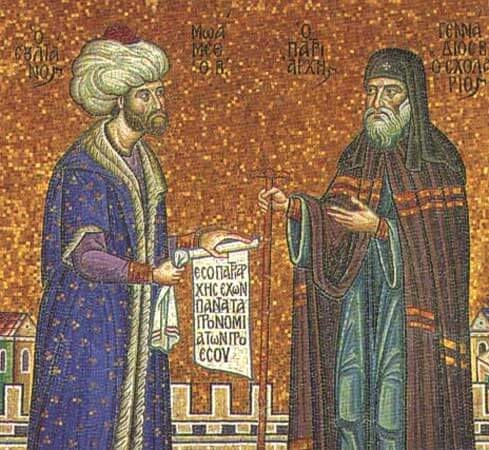
Mehmed II realized that his invasion had destroyed one of the greatest cities of the time. To rebuild it he would need expertise, which could not be restricted by political boundaries. He started an extensive program to rebuild the city. Builders, artists, artisans, scientists, and scholars from different parts of the world were encouraged to come and contribute to the process. Christians from other countries like – Italy came with renaissance ideas & contributed to the growth of the city. Trading rights were given to many non-Muslims, Jews, and Armenians. A considerable degree of religious freedom was given to the people. According to a survey of 1478, Constantinople had an estimated population of 80,000; with 60% of the population being Muslims, 20% as Christians and 10% being Jews.
Mehmed II also wanted his city to grow as a center of culture and learning. Scholars of many different faiths (including Christianity) were welcomed at his court. Soon his court was full of erudite scholars of the time. One of his famous paintings was drawn by famous Venetian artist Gentile Bellini. Patriarch of Constantinople converted many Christian texts into Turkish, under instructions from the Sultan. The Sultan’s library was full of different texts in Greek, Latin, Persian, Arabic, and Turkish. Mehmed II had indeed established himself as not just a great conqueror but as a great leader of a new age.In 50 years, Constantinople would again become the largest city in Europe.
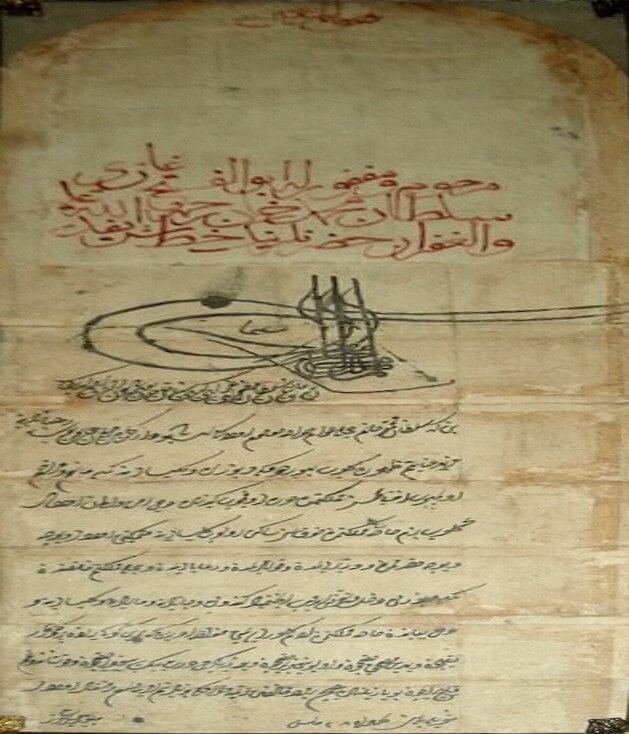
The Ottoman Empire of Mehmed II would continue up to 1923 when it was a dissolved (as a repercussion of the end result of World War 1) and the Turkish Republic came into existence. Constantinople’s name was changed officially into Istanbul. However, the old glory of the city & its erstwhile Turkish rulers is still visible in different facets of the city.
Jalal ud din Akbar was the 3rd emperor of Mughal Dynasty, who ruled over vast stretches of India, from 1556 to 1605. Known in history as - Akbar the great Mughal Emperor, he was born on 15 October 1542, in a fortress of Hindu Rajput in Umerkot, situated in modern-day Pakistan. His father was in a flight after losing a battle against his strongest enemy – Sher Shah Suri & had taken refuge with the local Hindu ruler – Rana Prasad.
Akbar’s father Humayun died when Akbar was barely 13 years old. His succession on 14 February 1556 was at a time when the Mughal empire was passing through a crisis. The empire left behind by Humayun was weak & prone to attack from all sides. An important military commander of Mughal army – Bairam Khan, assumed guardianship of Akbar. Faced with great adversity at a young age, he soon learned fighting skills and royal politics, essential for administration. However, hard pressed for time & low in priorities, he never learned to read or write.
One of the first wars the young emperor had to fight was against – Hemu, who had declared himself the emperor & taken control of Delhi after Humayun’s death. Akbar’s army led by Bairam Khan defeated Hemu in the 2nd battle of Panipat on 5 November 1556. A victorious Akbar entered Delhi, as the new Emperor, where he stayed for only a month. He soon left the city, to put down all the challenges to the throne of Delhi, one by one.
Once the immediate threat to his sovereignty was squashed, he directed his focus on expanding the empire’s borders. Under the leadership of Bairam Khan, the Mughal army conquered Ajmer, Malwa & Garhkatanga. Other important kingdoms of northern & central India – Lahore, Multan, Gwalior & Gondwana soon fell to Mughal rule.
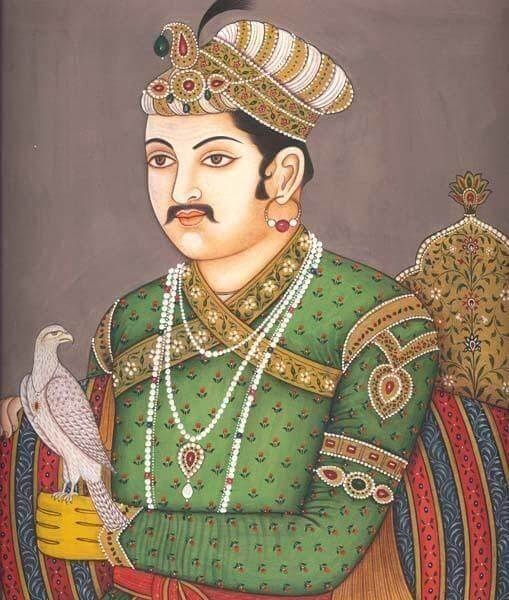
It was the kingdoms of Rajputana in the west, which still held out as a challenge to Akbar’s rule. So, in 1561, Akbar started his campaign to conquer Rajputana. He used both military strength as well as diplomacy to bring the rulers of these kingdoms, under his rule. Most of the Kings accepted Akbar, as their emperor. To consolidate the relationship with these Rajput Kings, Akbar married many Rajput princesses, like – Jodha Bai (Heer Kunwari) from Amber kingdom, and princess of Jodhpur & Bikaner. Akbar also got his son Jahangir married to the daughter of Raja Bhagwan Das. However, the rulers of Mewar kept opposing the Mughals till very end.
Following the conquest over Rajputana, Akbar continued his victorious streak by getting control over kingdoms of Kashmir, Kabul, Kandahar, Sindh, Gujarat (in the North and West) and Bengal (in the East). In later part of his life, Akbar concentrated in winning over the southern territories, the first Mughal emperor to do so.
Akbar's diplomatic policy– Akbar had married the princess of many kingdoms for political alliance. The male relatives of these princesses were welcomed in his court and given high administrative positions. Many potential rivals were changed to loyal relatives by these alliances, which increased the size of his empire while making it more powerful. Many Rajput forces joined hands with the Mughals, to increase the might of the empire. Hindu and Muslims nobles from different places & background stood together under his roof, fostering the idea of secularism & one nation, one people.
His diplomatic endeavors, also extended to power beyond the national boundaries. Treaty with the rulers of Uzbekistan ensured there would be no interference from their side in Kabul & Kandahar. Emperor Akbar was also in great terms with the Ottoman Sultan Suleiman, which not just increased the trades between the two empires, but also ensured a smooth journey for people from India, going to Mecca and Medina, for pilgrimage. The emperor also tried to develop a better relationship with the Portuguese, but they did not reciprocate his feeling.
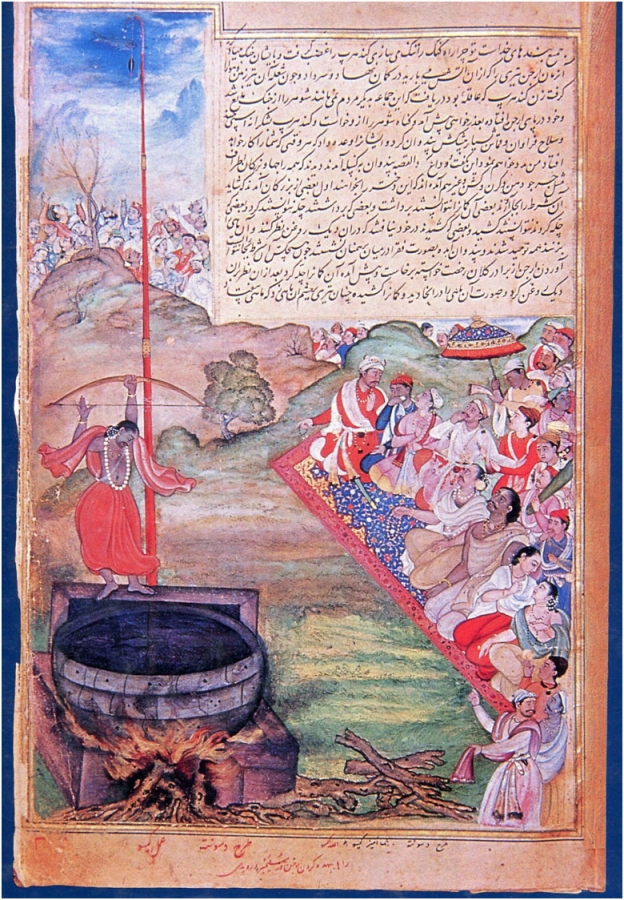
Akbar’s Religious Tolerance- Akbar's religious policy was of great religious tolerance. There is concrete evidence that he made no efforts to force his subject to follow his own religion. Akbar was himself born in a fortress of a Hindu ruler, who had sheltered his parents in their difficult times. The religious tolerance preached by the Sufi “Peers” of the time, greatly influenced him. For the widespread acceptance of Akbar’s Hindu wives and his Hindu relatives; it was important that a general atmosphere of religious tolerance had to be developed.
Akbar’s vast majority were Hindu subjects and without getting their love & respect, he realized he would never be the true emperor of the nation. For this, he allowed freedom of worship according to the individual’s choice in his empire. Religious conversions were stopped during his reign. He abolished Jizya Tax & pilgrimage tax on Hindus. Many Hindus were appointed in high official posts, chief among them were – Raja Man Singh (General), Todar Mal (Finance Minister), Raja Bhagwan Das (Minister). Akbar also translated important religious texts of Hindus – Vedas, Ramayana, Mahabharata and Bhagavad Gita from Sanskrit to Persian.
Infallibility Decree of Akbar or “Mahzarnama” was issued to curb the dominance of Ulema. This declaration in 1579, made him the supreme authority in all religious matters and was made to mainly legitimize his non-sectarian policies. In his famous “Ibadet – Khaneh” at Fatehpur Sikri (which was a great religious assembly of its time), not just Muslims, but also Hindu, Jain, Parsi & Christian religious experts were welcome. Study of different religion, made the emperor realize that there was truth in all of them, but not one of them possessed absolute truth. Hence, he founded a new religion called “Din – I – Ilahi”, which included good values of all religion.
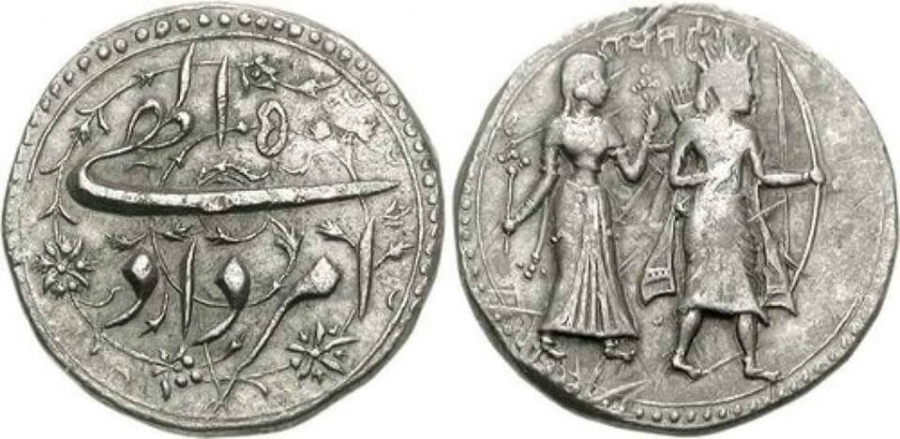
Emperor Akbar also gave land grants to even non-Islamic religious bodies of – Hindu, Jains and Persians. Hindus had full rights to construct new temples & repair old ones. Evil practices in Hindu society of the time – like Sati was also discouraged by Akbar. During Akbar’s reign, he enforced a strict Ban on cow slaughter (as cows are respected in Hindu religion). This practice was also followed by his son (Jehangir) and grandson (Shah Jehan). All this practice created an empire, which was strong & tolerant to people of all faith.
Emperor Akbar established an administration, which was based on moral values and welfare of all people irrespective of Religion, caste, and creed. The Empire was divided into 15 Subas (governed by subedar), with each of these divided into Sarkar (governed by a Faujdar), which in turn were divided into Parganas (governed by Shikdar). Each of these Parganas consisted of several villages, which were governed by a panchayat. This hierarchy ensured a well-organized system for the administration of the empire.
Equal opportunities were provided to all people based on merit. To avoid any abuse of power, the emperor retained all supreme administrative, legislative and judicial powers. Although he himself could not read or write, he had a court full of people, who advised him on – religion, philosophy, history, and art. The 9 Gems or “Nava Ratna” of his court were 9 extremely talented people from various backgrounds, whose presence made Emperor Akbar’s court, certainly one of the best Royal Courts of the time.
All the above-mentioned rulers lived in a world, which was much more violent than today. It was a time when either you could be the hunter or you were the hunted. Many of the above mentioned - great Muslim leaders of the world, did engage in violent warfare at their time. This article doesn’t glorify their violent actions in any way but just reflects them as they really happened in the pages of history.

Although many times, these kings have been accused of fighting based on their religious values, but the truth is their conquest were always political. These can be seen by ample example of the fact, that in many instances, they fought against people of their own faith, with people of opposite religion on their side. In those days, people of different religions fought together against enemies (who may or may not have the same religion as them) based on personal loyalty. Religious affiliation was always a secondary factor. However, misinterpretation of history continues to present a distorted legacy of the great Muslim Kings who changed the course of world history. Their correct stories deserve to be told.